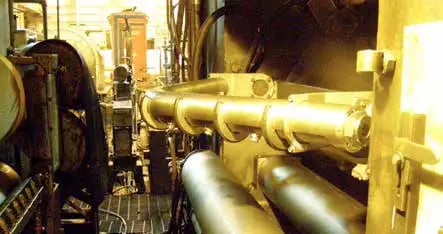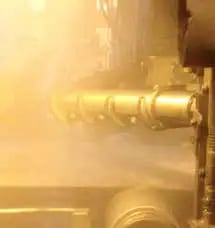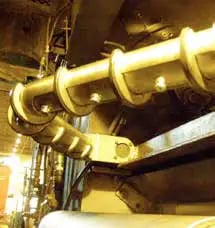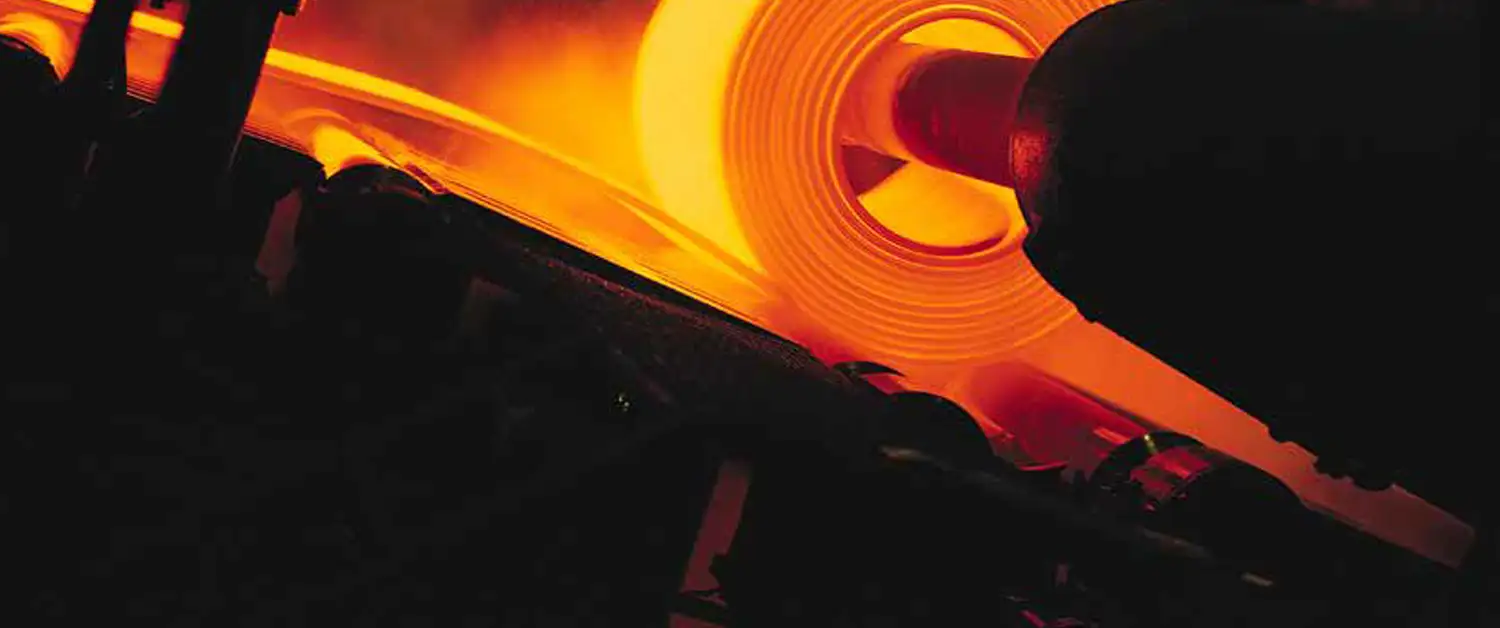Since 1989, Silvent has developed unique, safe, efficient compressed air-blowing products used extensively in steel manufacturing plants worldwide. Through collaboration with clients, Silvent application engineers create designs and solutions focused on optimising energy consumption and safely blowing compressed air while reducing noise for mill operators.
Silvent's InTech's steel manufacturing division specializes in finding the best solutions for clients to achieve superior finishes. The Silvent InTech range of products has provided customized solutions to steel manufacturing plants across Europe, the US and the world for several decades. These solutions suit the most demanding applications.



Application 1: Mill Scale Removal from Steel Surfaces
A large amount of water is delivered under high pressure during the descaling process to break down the mill scale, then compressed air is used to remove the loosened mill scale and water before rolling.
In many cases, high-flow liquid nozzles had previously been placed for this purpose. However, liquid nozzles are not designed to blow compressed air efficiently, due to increased energy consumption and poor distribution.
Solution: Silvent application engineers analysed this application. After the collaboration, the solution consisted of replacing previous liquid spray nozzles with SILVENT-735L stainless steel high-force air nozzles, eliminating mill scale more efficiently, and significantly lowering air consumption and noise levels. The design of the SILVENT 735-L Laval air nozzle consists of a surrounding core of air travelling at supersonic speed and a protective sheet of air moving parallel to the central air jet. The central stream of air is generated by Laval technology. This converts all of the energy stored in compressed air into kinetic energy. This is without permitting the air jet to expand laterally after passing through the nozzle.
The protective sheath of air prevents the core stream from being slowed down by the surrounding air. This allows it tinteinteo be utilised to full effect. Turbulence is minimised, lowering the noise level.
Application 2: Blowing Off Mill Scale From Coil Box
Heat is delivered uniformly over the length and surface of the steel strip in the coil box. The mill scale is broken off the steel strip when it is wound up in the coil box. It is critical to remove any mill scale here to avoid it being rolled back into the steel strip. Due to mill scaling issues in the completed rolled steel, the coil box was previously high on the client's priority list of stations that needed quality improvement.
As a first attempt, the client developed in-house air nozzles or other market goods. Despite numerous attempts, this failed to provide adequate results with various possible alternatives.
The blowing force and power were insufficient to adequately remove all mill scale. Water nozzles were also examined, but they were not an appropriate option since water'intech effect on steel temperature was far too negative.
Upon realizing that the mill scale problem might lead to the client losing its most significant automotive customer, the project was given the utmost attention.
Solution: Because Silvent has long been a supplier and partner to the steel mill, they were naturally approached to help find a solution. Silvent application engineers determined the amount of blowing force required to assure a successful outcome. This was based on experiments performed at the steel mill and in Silvent's testing facility. This included devising strategies in collaboration with steel mill engineers to determine the most suitable position and airflow orientation.
9 x SILVENT 735 LA adjustable air nozzles were the choice with 127N blowing forces at 5 bars of pressure. They were utilised in various orientations to blow off and clean the mill scale successfully.
Application 3: Finishing Mill Inspection Issues
High forces are applied in the finishing mill to roll the red-hot steel strip through six pairs of rolls until it achieves the desired thickness. Water is then introduced to cool the mechanical components during rolling.
Following the last pair of rollers, inspection equipment is fitted. The inspection process is designed to discover and document any surface blemishes or dimensional abnormalities on the steel strip. The strip must be dry for the device to provide accurate measurements to operators.
Solution: Since the mill had been successfully blowing away water and mill scale with Silvent air jets in similar scenarios for years, it was only logical to provide this portion of the finishing mill with Silvent's air technology as well.
The designers installed two of Silvent's biggest air nozzles, SILVENT 730-C and SILVENT 735-L. Because of the high strip velocity and hard setting, more force was required to get the most out of the compressed air.
These steps, together with the right location and blowing angle, guarantee the essential quality of the steel surface to produce valid inspection results.
Application 4: Customised Air Knives for Solving Quality Issues
Steel plate is rapidly cooled after hot rolling with significant volumes of water. In this example, the difficulty was that the water remaining on the steel surface caused a poor finish, producing streaks on the final plate product.
An American steel mill attempted to develop a solution by employing compressed air to blast away leftover water. The mill engineers looked more closely at this application because Silvent was previously involved in blowing applications at the steel mill. Silvent developed a proposal to rebuild the air knife after reviewing the installation with the engineers responsible for the mill process.
It performed the necessary calculations and control measures. The original air knife was intended to cover the whole steel plate width. It provided enough airflow to cool the steel without streaks.
Solution: A custom-built air knife equipped with SILVENT 703 stainless steel air nozzles significantly enhanced the manufacturing process and removed plate streaking issues. The SILVENT 703 with aerodynamic slots, allowed optimal utilisation of compressed air where extremely high ambient temperatures and blowing forces were needed.
Using the air blow-off technique, the client was able to offer high-quality steel plates free of cosmetic defects.
Do you have a hot rolling or mill application? Let us know how we can develop with you a bespoke solution to solving any issues you have with your process.


